Porsche made waves a few years ago when it introduced the all-electric Taycan. Now that we all know how to say the name correctly, they’ve rolled out the next iteration of its bestselling battery-electric model for the 2025 model year.
Now that it’s been accepted — mostly — by Porsche diehards, it’s time for the all-electric Taycan to get its first significant update. With a crisper exterior design, more power, better acceleration, and faster charging times for the 2025 model, we’d suggest that mission has been accomplished.
The enhancements, which also include greater range to go with those faster charging times, come for the Taycan sedan and Taycan Cross Turismo. Each gets four new powertrain options, including rear-wheel and four-wheel drive options.
“We ushered in the new era of e-mobility with the Taycan at the end of 2019. It immediately proved to be a game changer and innovative pioneer in the e-vehicle segment,” said Kevin Giek, head of the Taycan model line, in a release.
“We are now continuing this success story with the extensively updated Taycan. The model line has reached new heights in terms of performance, with exceptional driving dynamics and driving pleasure. At the same time, we were able to improve efficiency, range, day-to-day usability and comfort.”
Faster is better, right?
If it’s a Porsche, fast is part of the resume and the Taycan team made sure they polished that part of the car’s CV. The rear-wheel drive Taycan sedan races from 0 to 60 mph in 4.5 seconds, 0.6 seconds faster than before.
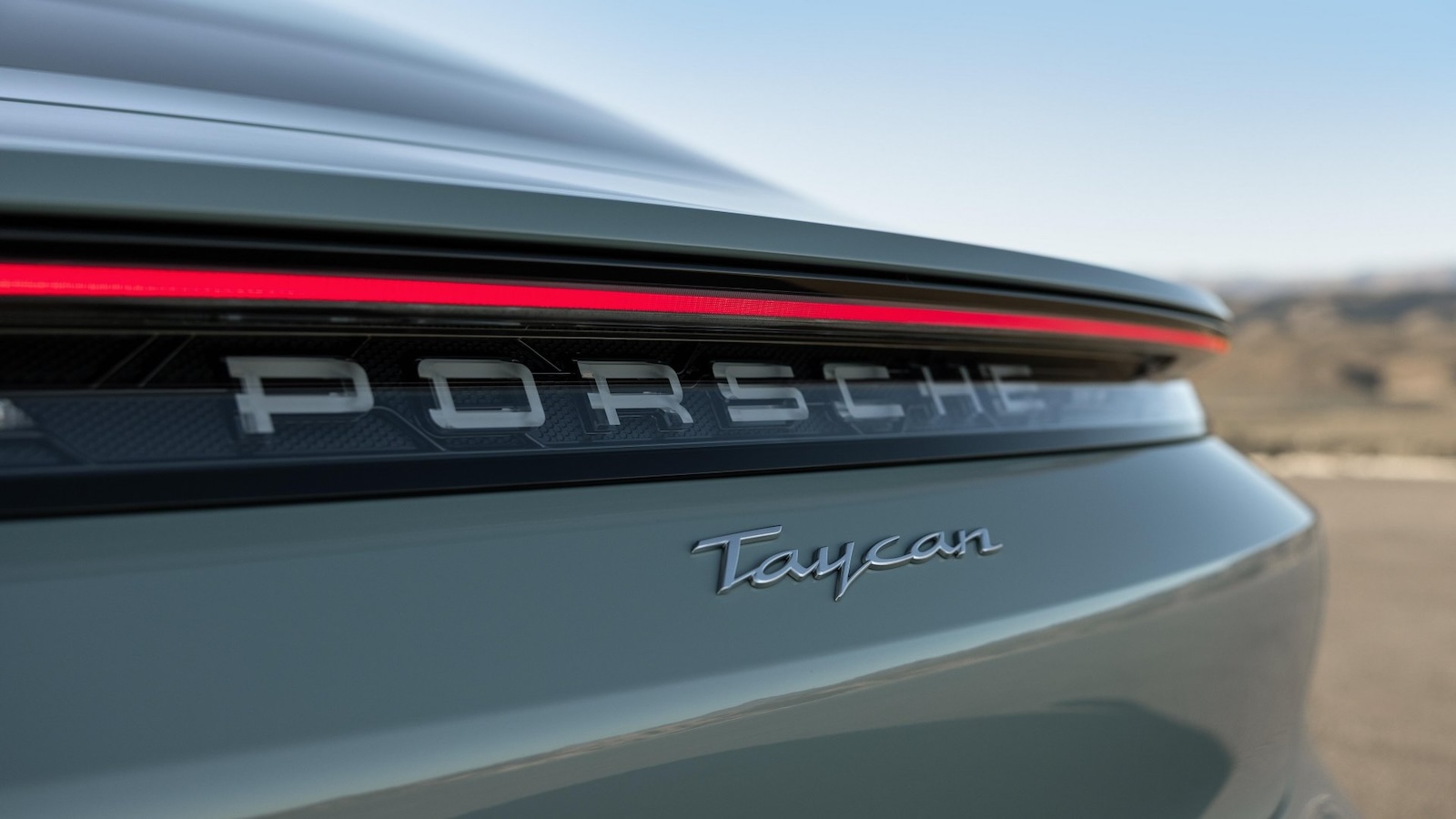
If they look a little different, it’s because they are a little different with tweaks to the front- and rear-end styling courtesy of new headlights and taillights.
Meanwhile, the new Taycan Turbo S sedan is now capable of reaching 60 mph in just 2.3 seconds, which is 0.3 seconds quicker than its predecessor. It’s now the quickest production car Porsche has ever offered, officials noted.
But winning the Traffic Light Grand Prix isn’t the only need for speed and Porsche’s taken care of the other instance: passing. As part of the Sport Chrono package, there is a new push-to-pass function that provides a temporary 93 horsepower boost. It lasts 10 seconds, which should be plenty of time to blast past slower moving vehicles.
“The increased acceleration rates are generally the result of higher system output,” the company noted. “For example, the base Taycan delivers 60 kW more than before. In the Taycan Turbo S, it’s an additional 140 kW when using Launch Control. This increases the system output of the top model to 700 kW/938 hp – making it the most powerful production Porsche to date.”
More Porsche stories
- Porsche’s Second EV, the Macan SUV, Will Deliver up to 381 Miles Range
- Porsche Continues 911 Legacy with New Carrera T
- First Look: 2024 Porsche Panamera
Faster charging may be even better
The Taycan not only moves faster but it also charges faster too. It can be charged at 800-volt DC charging stations at up to 320 kW under ideal conditions — 50 kW more than before, officials note.
The fast-charging window of the new performance battery has been significantly expanded. This means that high charging capacities can be sustained for longer periods of time, even at lower temperatures. Also, now standard is a 150 kW DC/DC converter, which aims to optimize charging speeds on 400-volt networks.
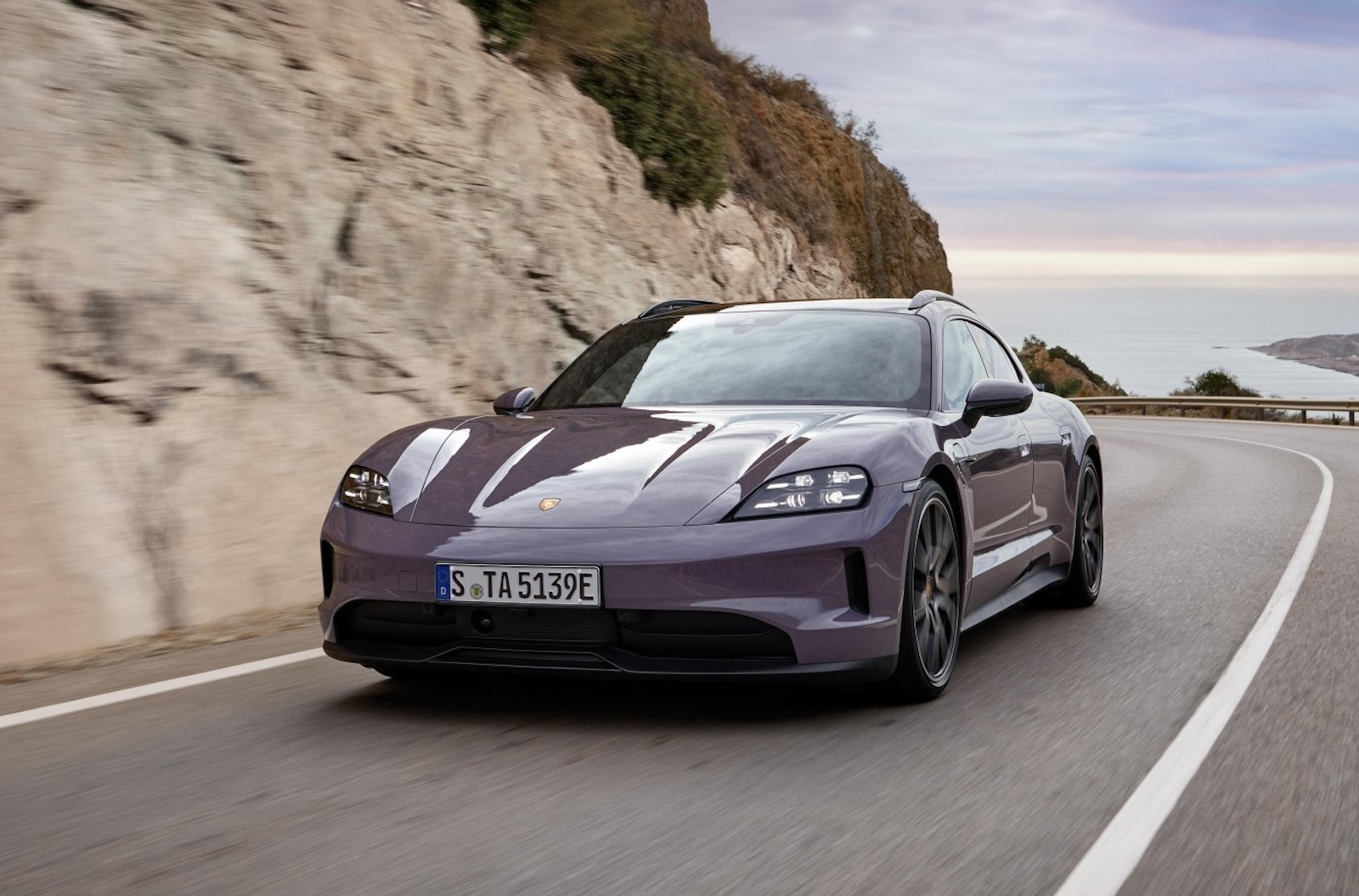
The new model can charge from 10% to 80% in just 18 minutes — with the new Taycan’s larger 105 kWh battery, up from 93 kWh.
What does it all mean? It allows for charging from 10% to 80% in just 18 minutes — with the new Taycan’s larger 105 kWh battery, up from 93 kWh. That’s comforting to know, although with being able to travel more than 360 miles on a full charge, you may not have to do it all that often.
The company put the new model through its paces recently, driving from Los Angeles to San Diego and back. It clocked in at nearly 365 miles on a single charge.
“A great result,” Giek said earlier this month. “The range test in Southern California impressively demonstrated how efficient the reworked Taycan is. We are continuing to focus on our ‘fast travel’ strategy for electric mobility: short charging stops paired with high real-world ranges thanks to efficient drives.”
The company tested four vehicles with 12 different drivers during a three-day period. They spent that time on I-405 and I-5 between the two cities, driving at top speed of 75 mph. All used the larger Performance Battery Plus.
Not just faster and farther
The list of standard equipment is even more extensive than before for the EVs.
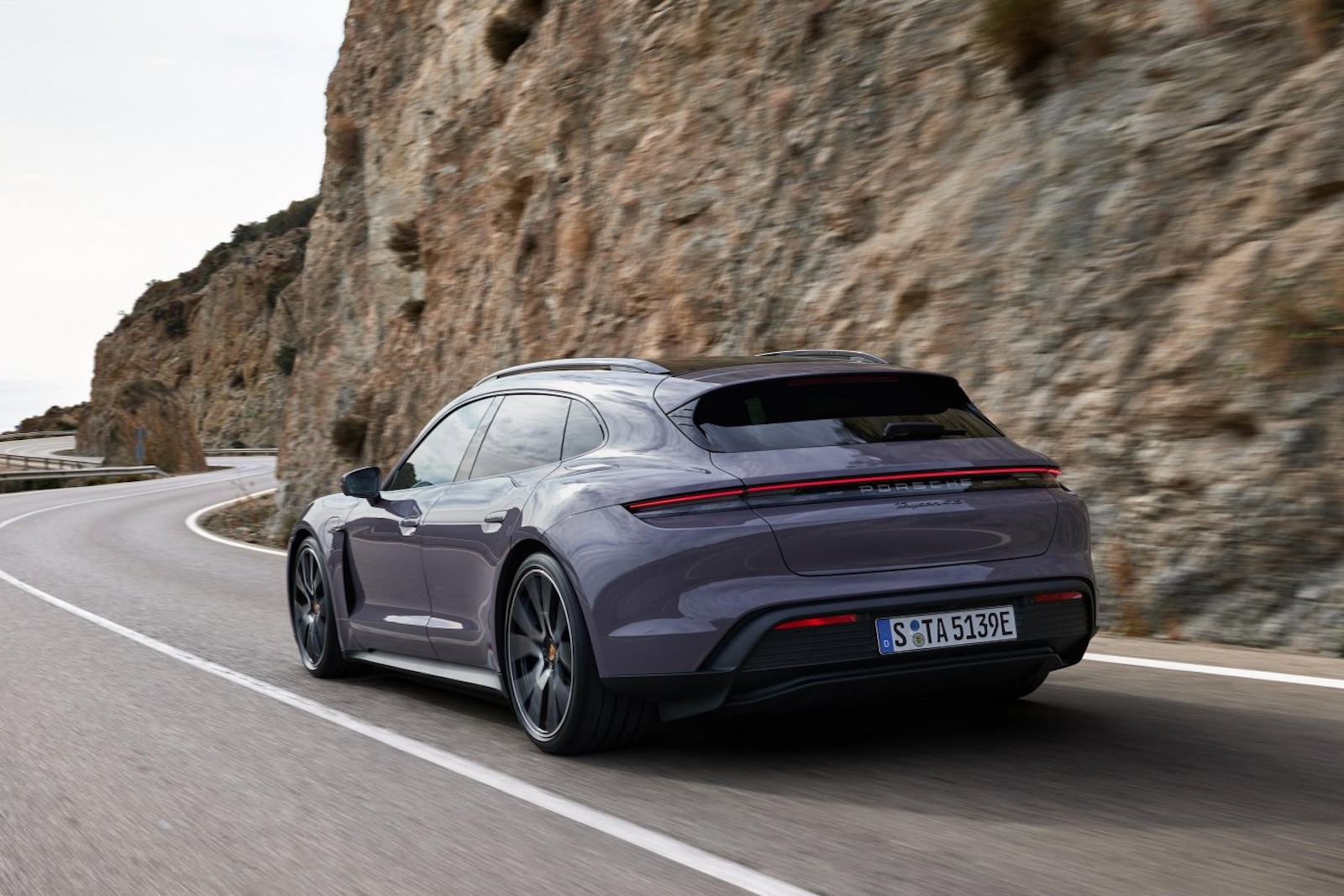
The rear-wheel drive Taycan sedan races from 0 to 60 mph in 4.5 seconds, 0.6 seconds faster than before.
They come with Lane Change Assist, heated steering wheel, Ambient lighting, electrically folding exterior mirrors with mirror surround lighting, Porsche Intelligent Range Manager (PIRM), a new cooling system, smartphone tray for wireless charging, electric charging ports on the driver and front passenger side and Drive Mode switch are all now standard features.
The entry-level Taycan is now also equipped with adaptive air suspension. In addition to the upgraded equipment, the improved product specification includes a lighter battery with increased capacity.
If they look a little different, it’s because they are a little different with tweaks to the front- and rear-end styling courtesy of new headlights and taillights — especially the front. With flatter headlights and new fenders, the Taycan looks a little lower, a bit more athletic.
The vehicle’s driver interface and infotainment systems get updates for 2025 as well. In addition to the aforementioned “push-to-pass” option for the Sport Chrono package, Apple CarPlay is more “deeply integrated” into the car’s displays and functions. The new In-Car Video function enables video streaming on the central display and the passenger display.
Digging deep
The new 2025 Taycan sedan and Cross Turismo models are available to order now and expected to reach U.S. Porsche Centers in the course of the summer in 2024, the company noted.
The base model only has five digits — before the $1,995 destination fee anyway — coming in at $99,400. There are eight possible ways to order your 2025 Taycan with the price topping out at $210,995, including the destination fee, for the Taycan Turbo S.
Now you know what to do with that tax return, eh?

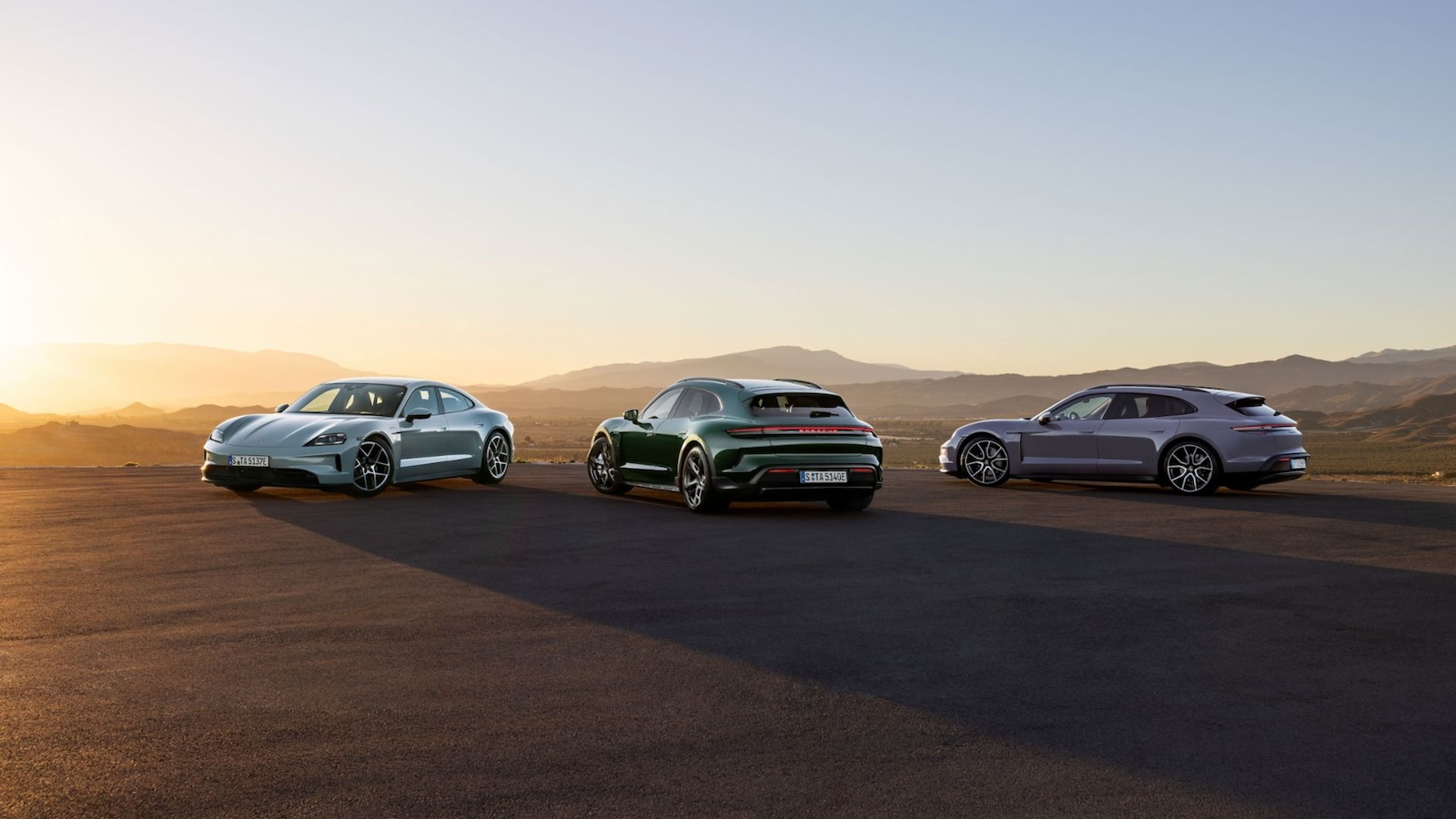


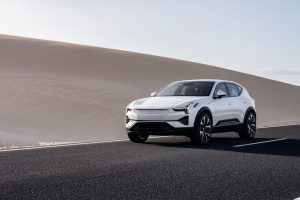
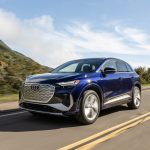
0 Comments